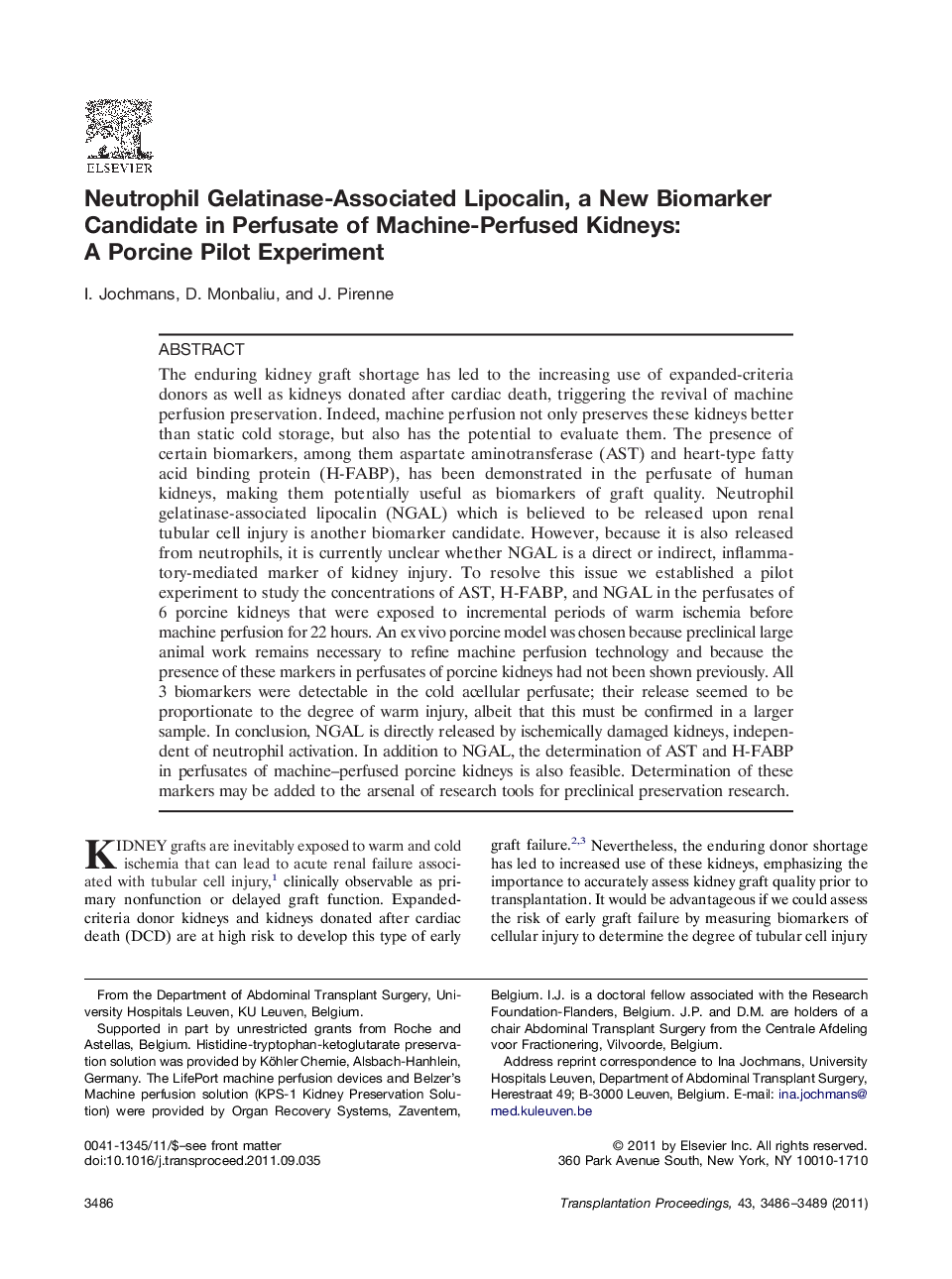| Article ID | Journal | Published Year | Pages | File Type |
|---|---|---|---|---|
| 4258625 | Transplantation Proceedings | 2011 | 4 Pages |
The enduring kidney graft shortage has led to the increasing use of expanded-criteria donors as well as kidneys donated after cardiac death, triggering the revival of machine perfusion preservation. Indeed, machine perfusion not only preserves these kidneys better than static cold storage, but also has the potential to evaluate them. The presence of certain biomarkers, among them aspartate aminotransferase (AST) and heart-type fatty acid binding protein (H-FABP), has been demonstrated in the perfusate of human kidneys, making them potentially useful as biomarkers of graft quality. Neutrophil gelatinase-associated lipocalin (NGAL) which is believed to be released upon renal tubular cell injury is another biomarker candidate. However, because it is also released from neutrophils, it is currently unclear whether NGAL is a direct or indirect, inflammatory-mediated marker of kidney injury. To resolve this issue we established a pilot experiment to study the concentrations of AST, H-FABP, and NGAL in the perfusates of 6 porcine kidneys that were exposed to incremental periods of warm ischemia before machine perfusion for 22 hours. An ex vivo porcine model was chosen because preclinical large animal work remains necessary to refine machine perfusion technology and because the presence of these markers in perfusates of porcine kidneys had not been shown previously. All 3 biomarkers were detectable in the cold acellular perfusate; their release seemed to be proportionate to the degree of warm injury, albeit that this must be confirmed in a larger sample. In conclusion, NGAL is directly released by ischemically damaged kidneys, independent of neutrophil activation. In addition to NGAL, the determination of AST and H-FABP in perfusates of machine–perfused porcine kidneys is also feasible. Determination of these markers may be added to the arsenal of research tools for preclinical preservation research.
